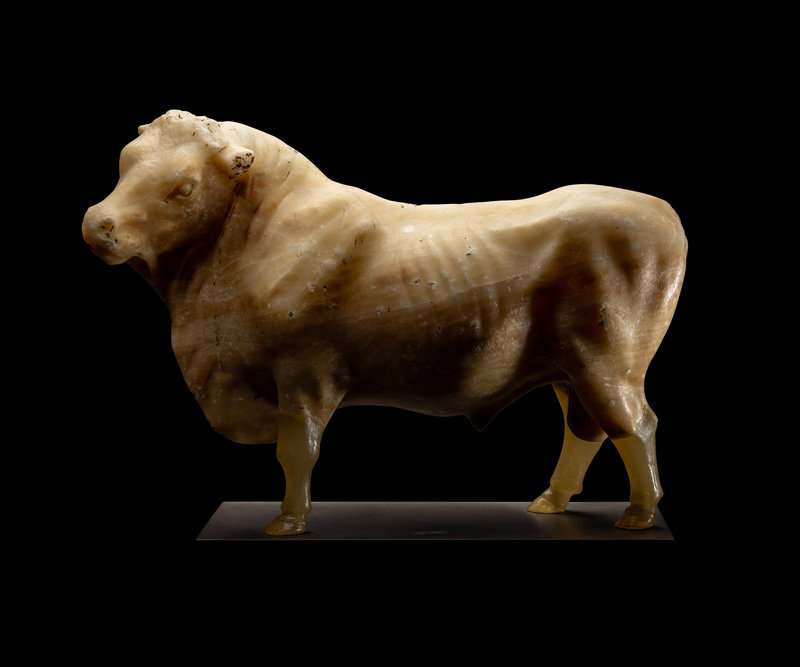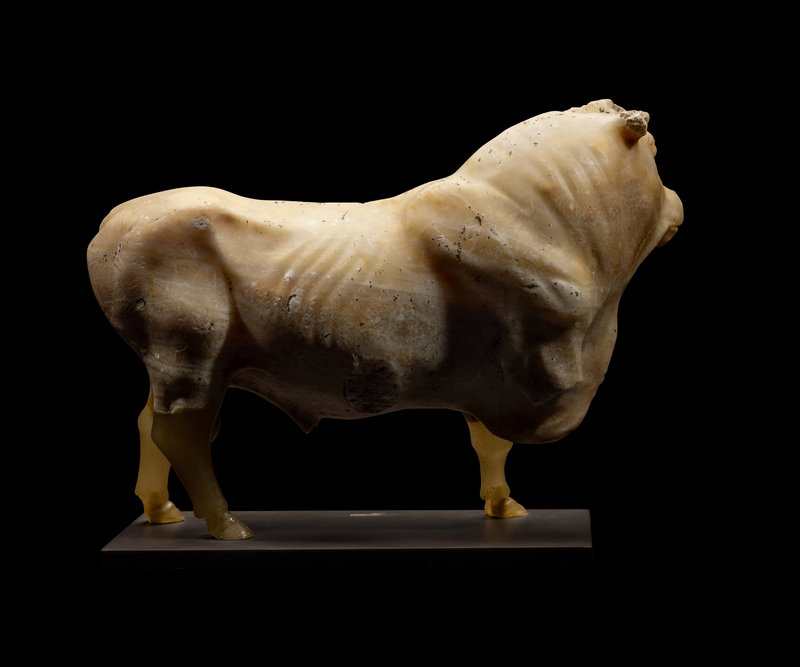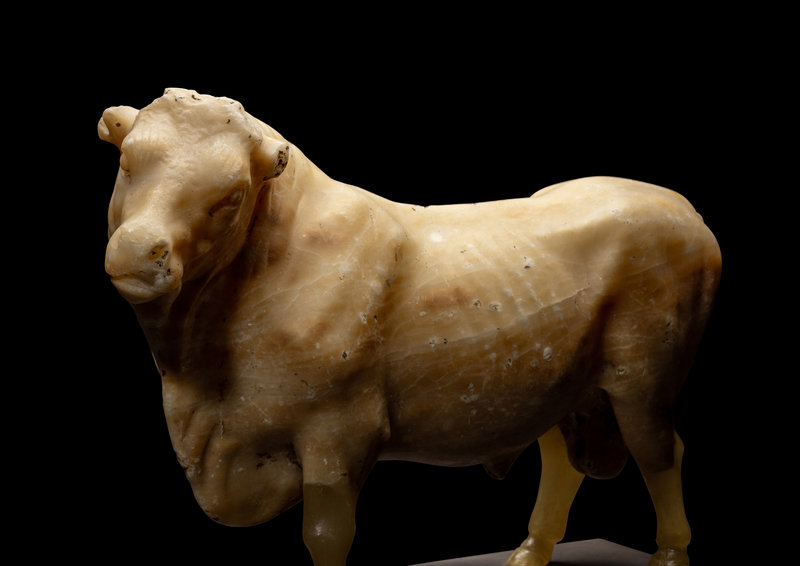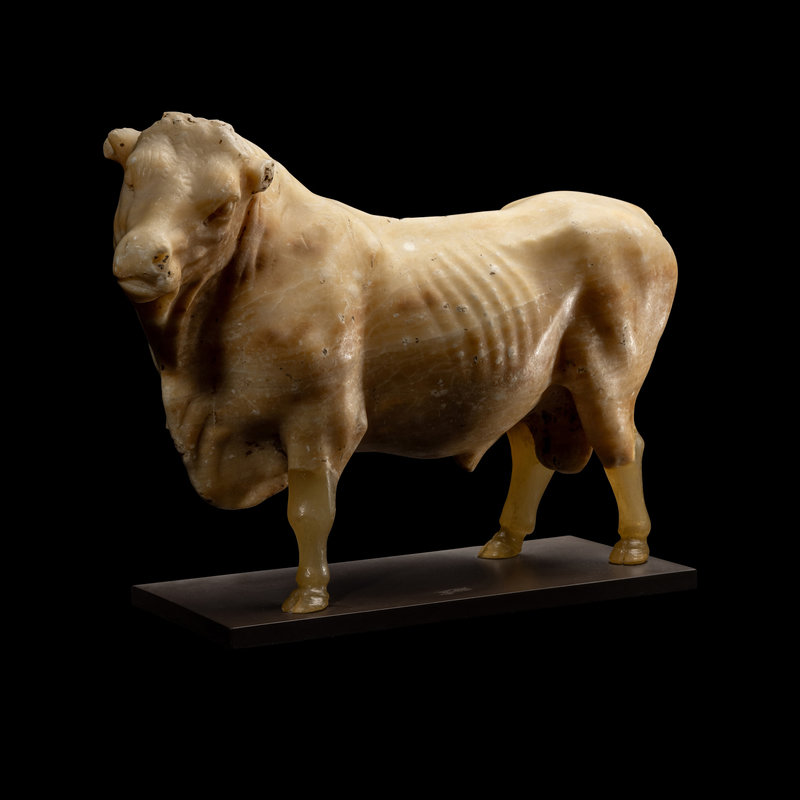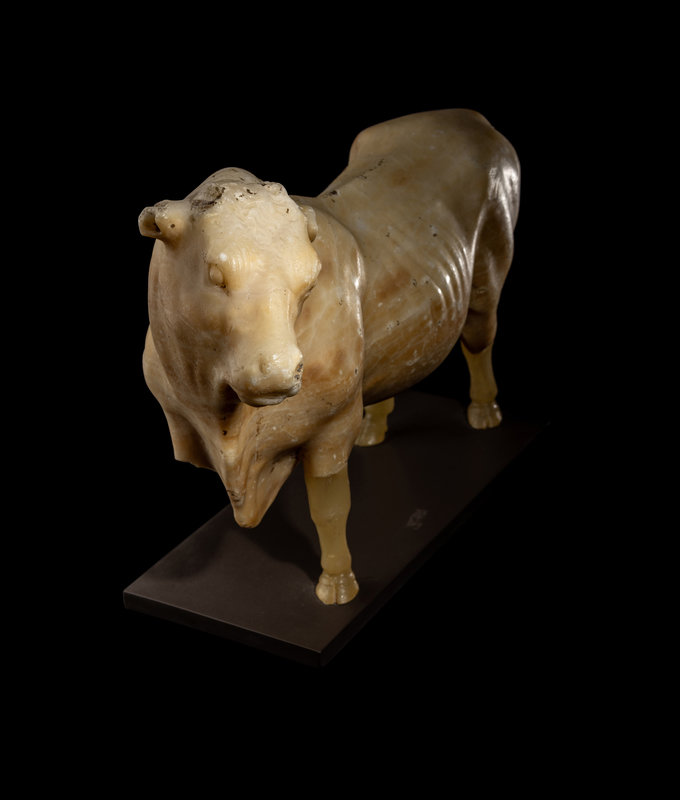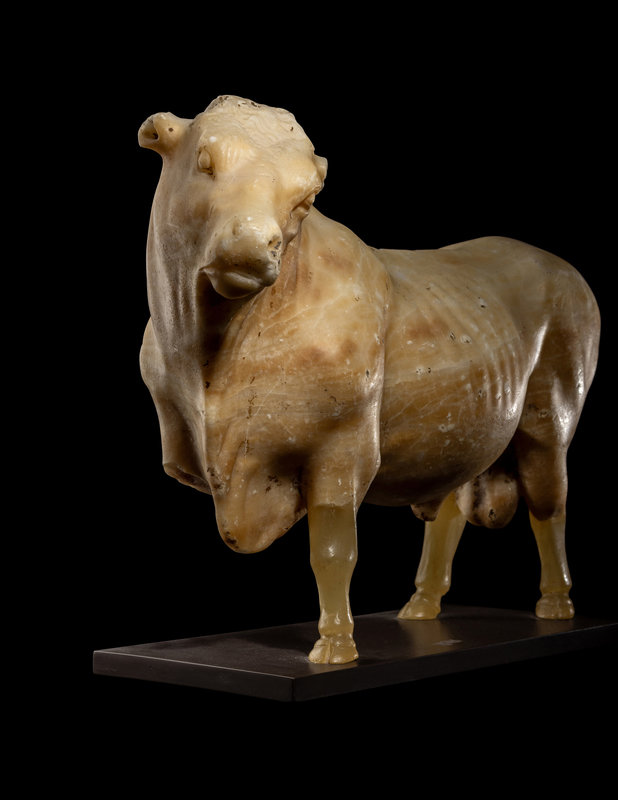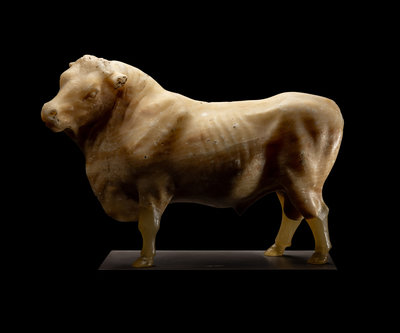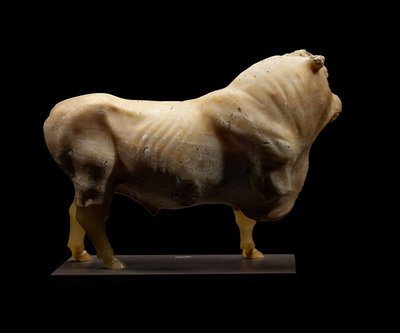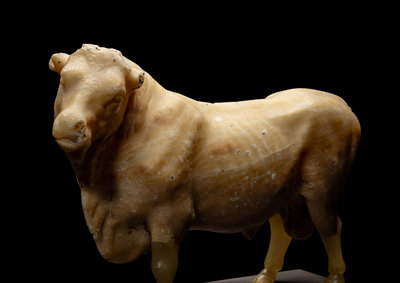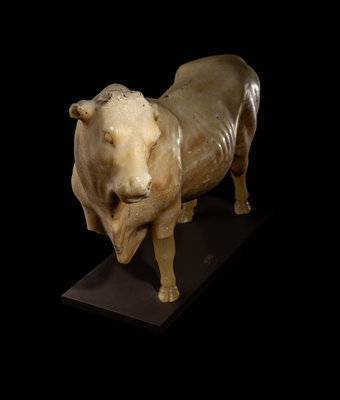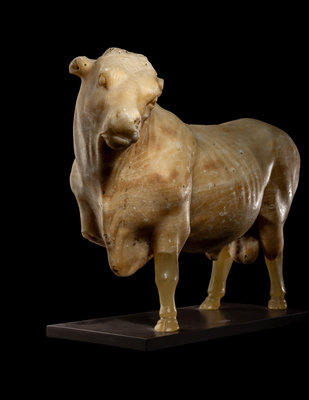Lot 186
A Roman Alabaster Bull
Sale 1343 - Antiquities and Ancient Art
May 23, 2024
10:00AM CT
Live / Chicago
Own a similar item?
Estimate
$8,000 -
12,000
Price Realized
$28,575
Sold prices are inclusive of Buyer’s Premium
Lot Description
A Roman Alabaster Bull
Circa 1st Century B.C.-1st Century A.D.
Length 15 1/4 inches (38.74 cm).
Property from a Private Collection, Chicago, Illinois
Provenance:
Private Collection, Switzerland.
Galerie Nefer, Zurich, where acquired by the present owner, 24 October 1985.
The buttery effect of carved alabaster and the consummate skill of the sculptor conspire in the creation of this bovine masterpiece. Its striking mimetic effect recalls a lost masterpiece, the bronze cow by Myron which was considered the Early Classical sculptor’s finest work. This lowing cow that stood on the Athenian Acropolis was reputedly so life-like it attracted calves who wished to suckle from it, bulls who wished to mate with it, and cow rustlers who recognized a beautiful heifer when they saw one.
Here, the subject is a powerful bull with supremely muscled shoulders and flanks, pronounced ribs, and a ridged dewlap. The muzzle is sensitively rendered, hooded eyes delineated, and poll and forehead lightly furred. The head is tilted to the left, giving the animal an appealing, somewhat inquisitive expression. The hindlegs are broken at the hocks and the forelegs slightly above the knees, but the animal’s placid stance can be reconstructed with certainty. In the Greco-Roman world bulls were the most prestigious type of offering, with symbolically charged hecatombs (in which a hundred cattle, with a preference for males, were sacrificed at immense expense and logistical effort) reserved for exceptional circumstances. Bathed and sometimes adorned with garlands, the animals led to the altar were selected for vitality and vigor deemed fit for the gods.
The use of alabaster is as unusual as it is effective. Primarily quarried in Upper Egypt, the material was a novelty in the broader Hellenistic world, reaching Rome only in the mid-1st century B.C. (Pliny, NH, 36.60) where it was prized for its subtle banding and relative translucency. The remarkable quality of the present statuette indicates the work of an accomplished Hellenistic sculptor who could have plied his trade anywhere in the Mediterranean, with the material hinting at training in the East. The most famous bull to feature in Greek mythology was the beautiful white stud Zeus, who transformed himself to seduce the Phoenician princess Europa, but bulls were widely celebrated elsewhere across the Mediterranean, most notably in Egypt where Apis bulls were revered in connection to Ptah and Osiris. While it is impossible to establish whether this bull was intended to represent a mythological character or a handsome specimen worthy of aristocratic and divine admiration, the choice of alabaster might have intentionally signaled an exotic connection in a period marked by fervent ‘Aegyptomania.’
The powerful musculature and elongated form of this bull finds a strong parallel in the marble cow from the Nelson Bunker Hunt Collection (The Summa Galleries, Beverly Hills, California, Ancient Greek, Roman and Byzantine Art, 18 September 1981, Lot 71.) See also the standing bronze bull from the Ménil collection for a related pose and turn of the head (H. Hoffman, Ten Centuries that Shaped the West: Greek and Roman Art in Texas (1971), cat. 84. On Myron’s lost bronze cow, see C. Mattusch, Greek Bronze Statuary: From the Beginnings Through the Fifth Century B.C., 1988. p. 144. For Greek sacrifice, including that of bulls, see W. Burkert, Homo Necans: The Anthropology of Ancient Greek Sacrificial Ritual and Myth (1983), ch. 1. For the use of alabaster in the Greco-Roman world, see S.J. Barker and S. Perna, “Alabaster. Quarrying and Trade in the Roman World: Evidence from Pompeii and Herculaneum,” ASMOSIA XI, Interdisciplinary Studies on Ancient Stone (2018), pp. 45 – 64.
Condition Report
Contact Information
Auction Specialist
